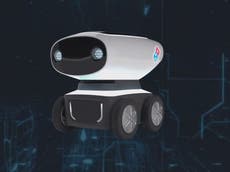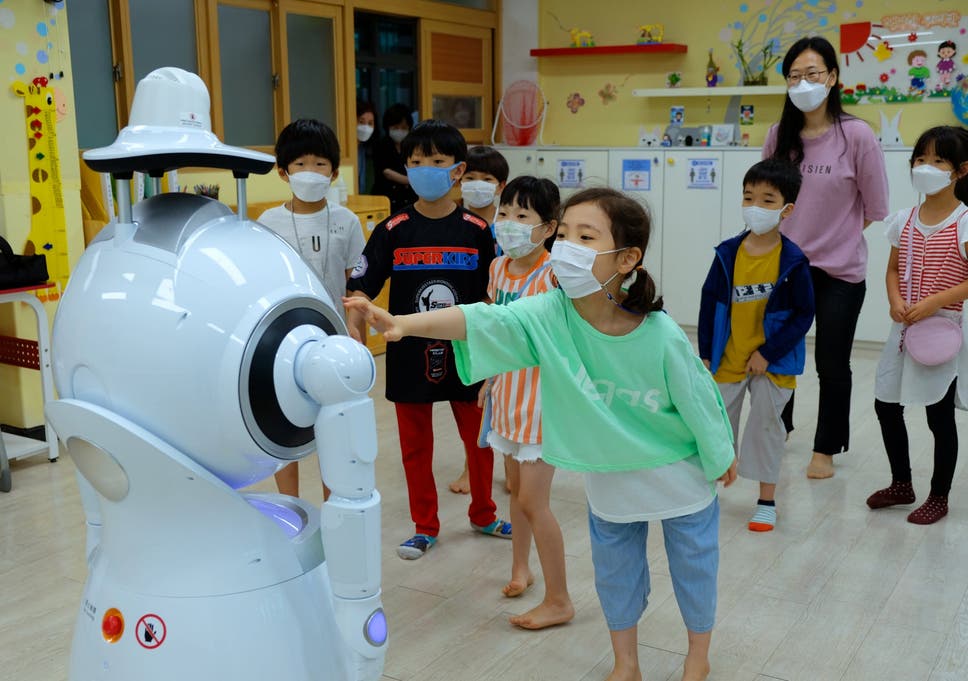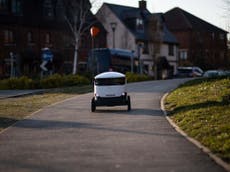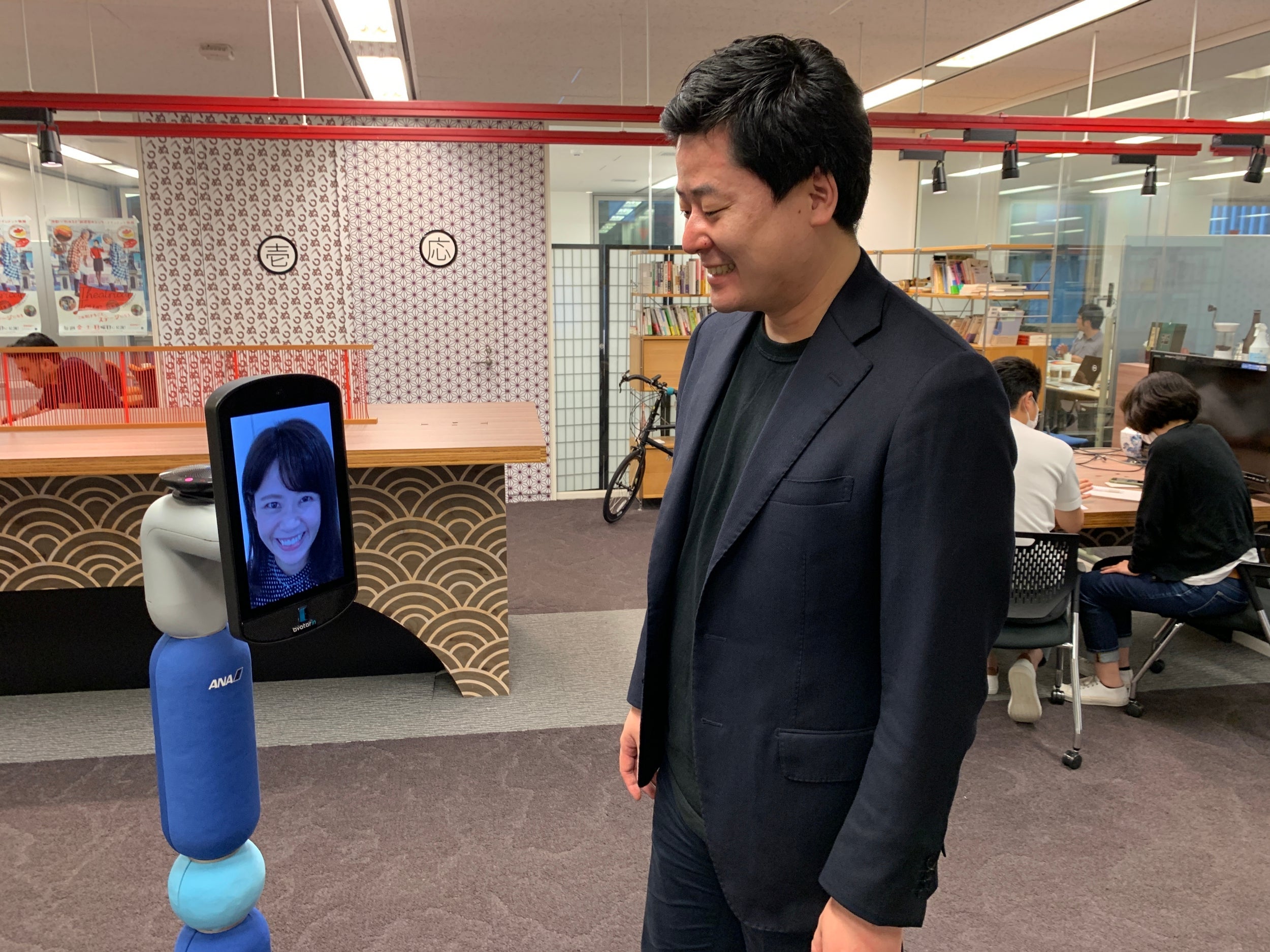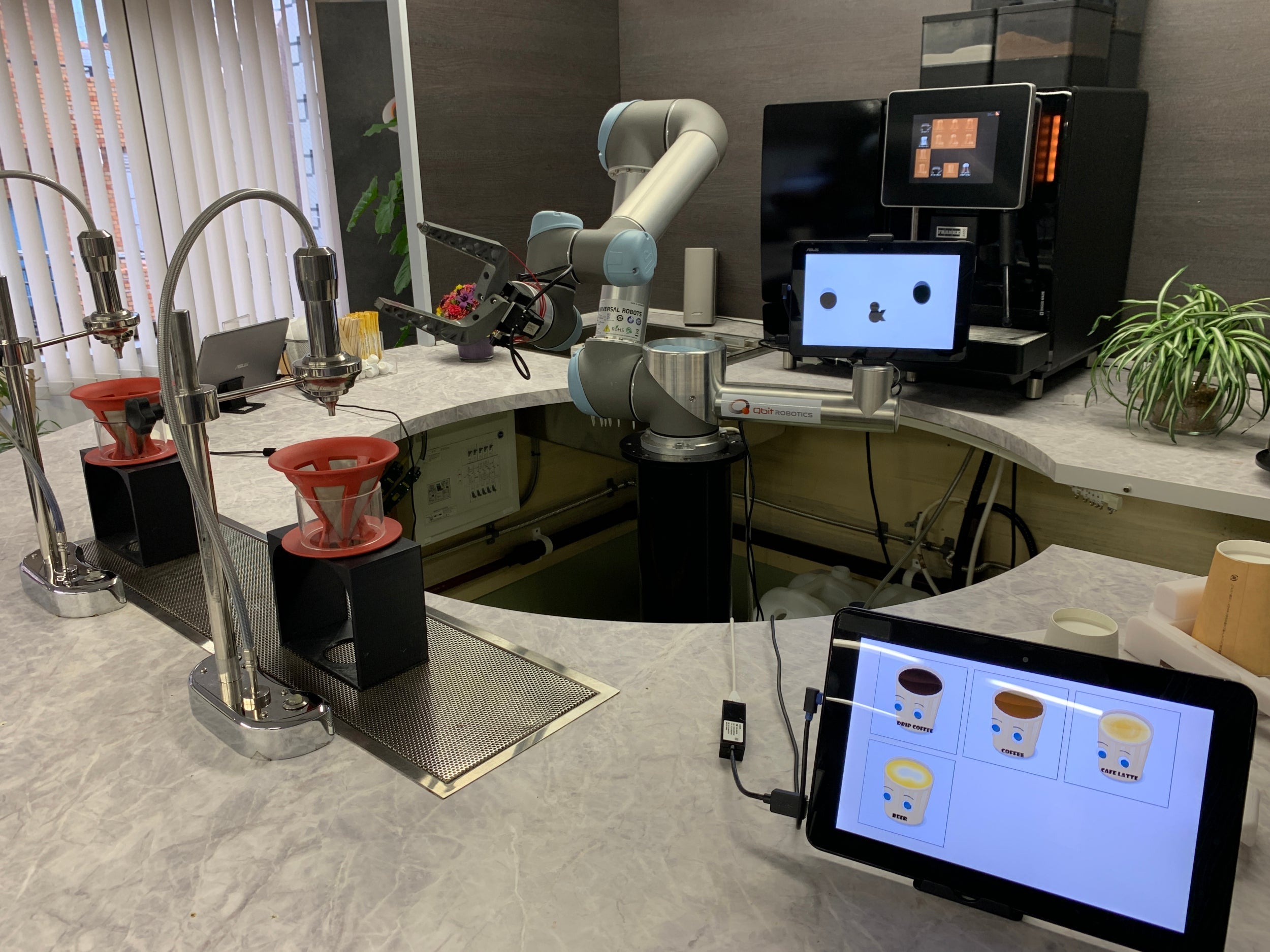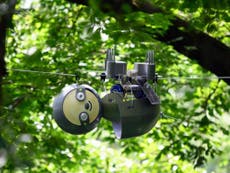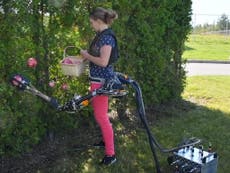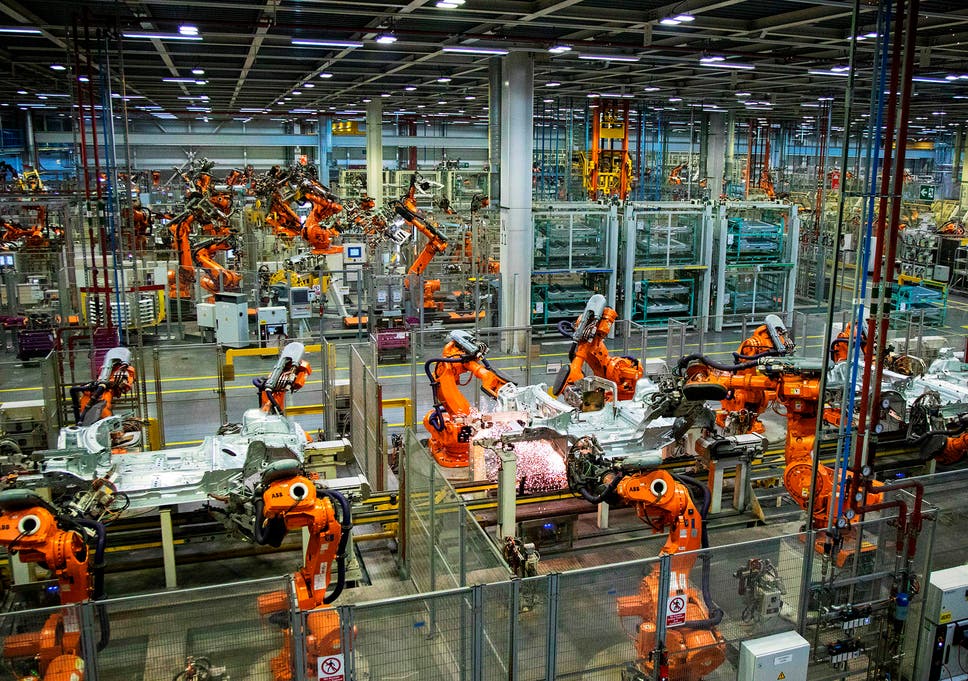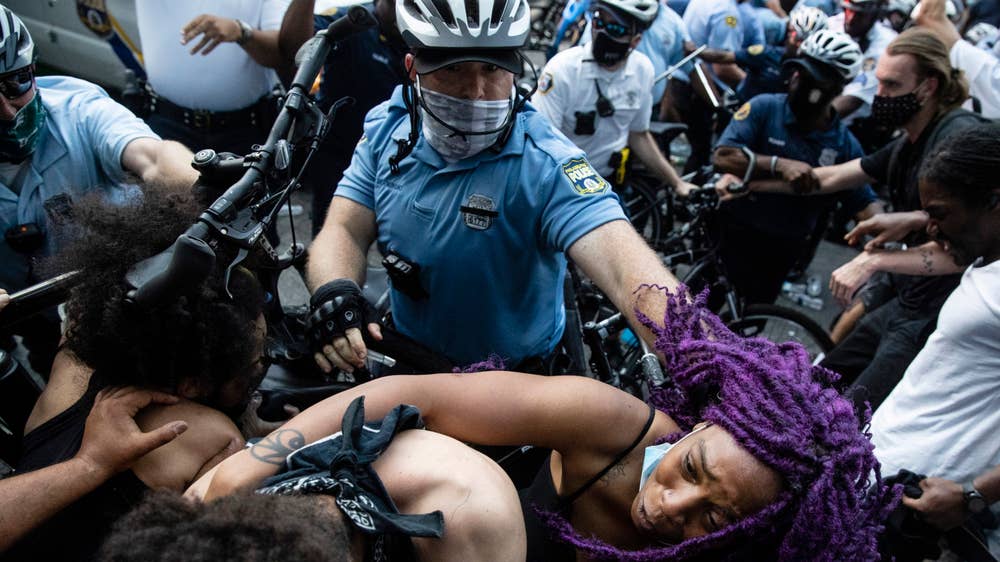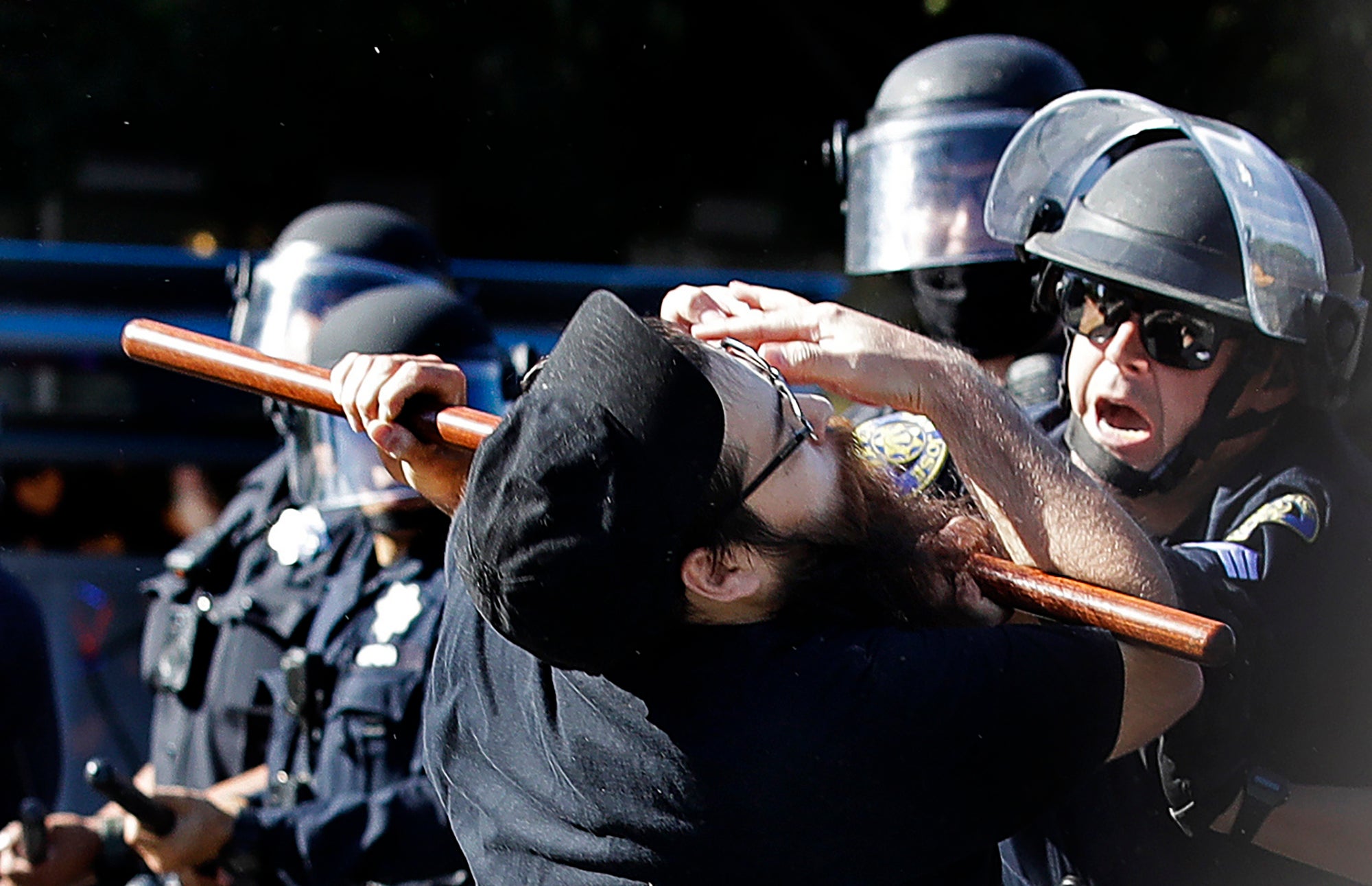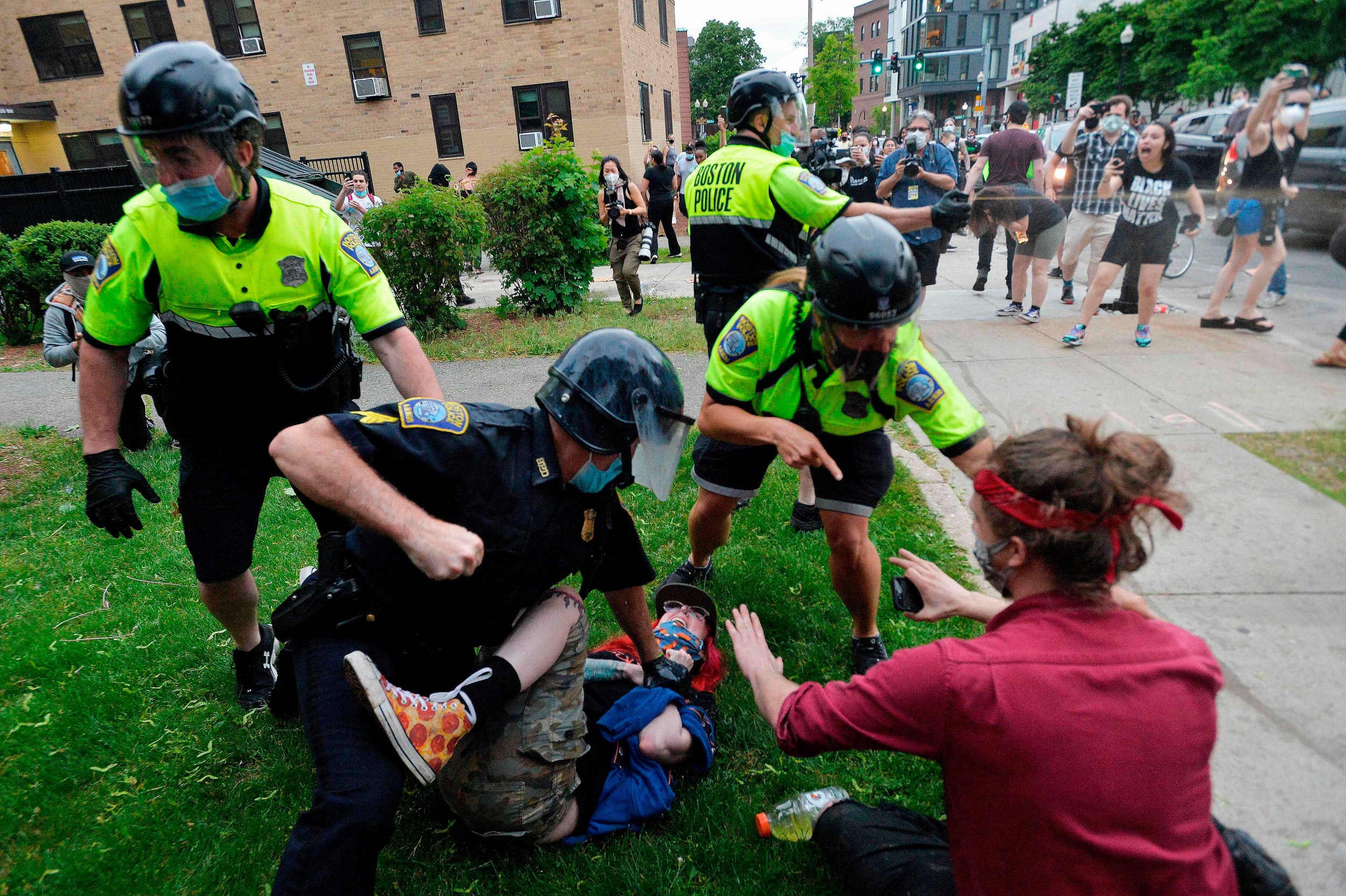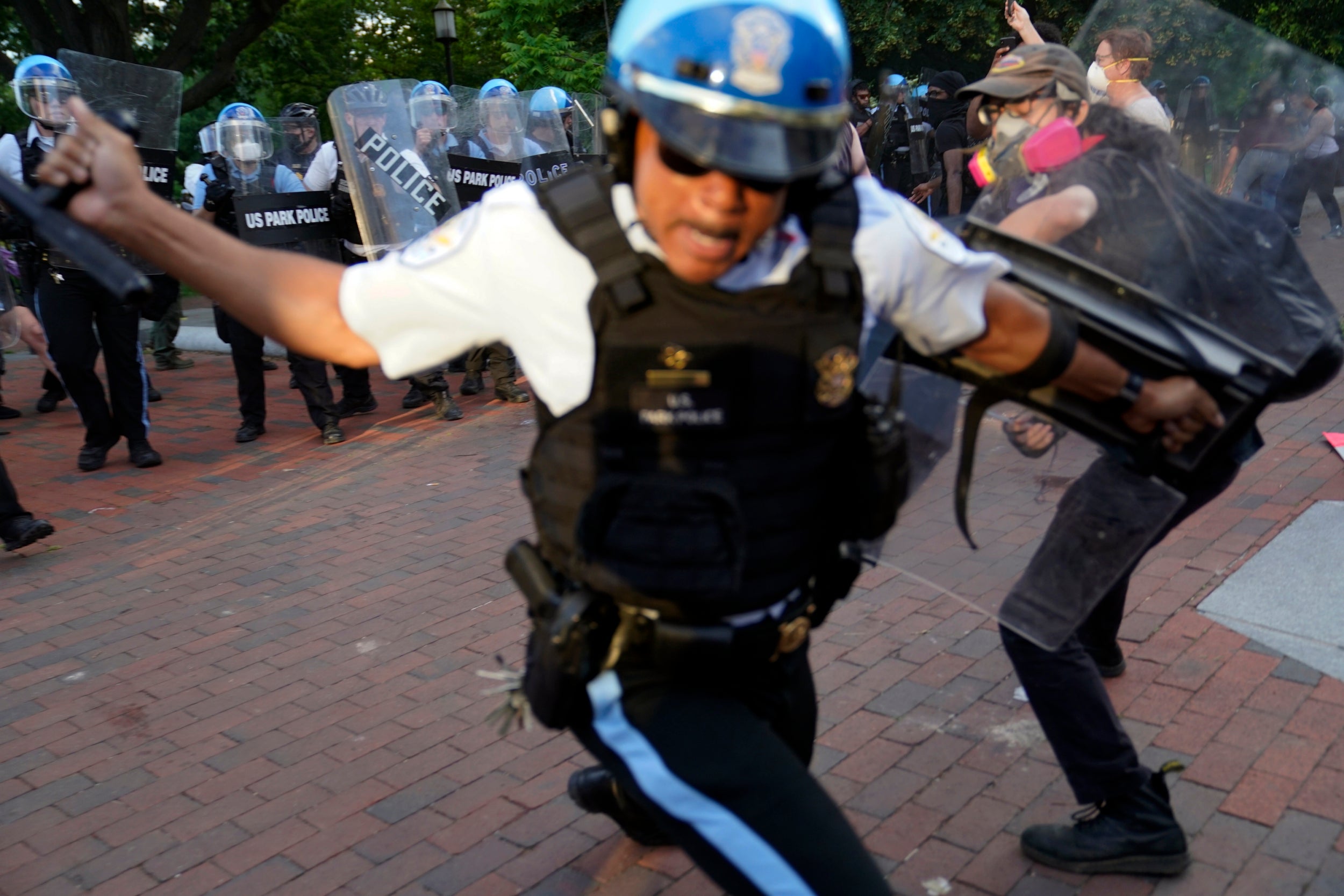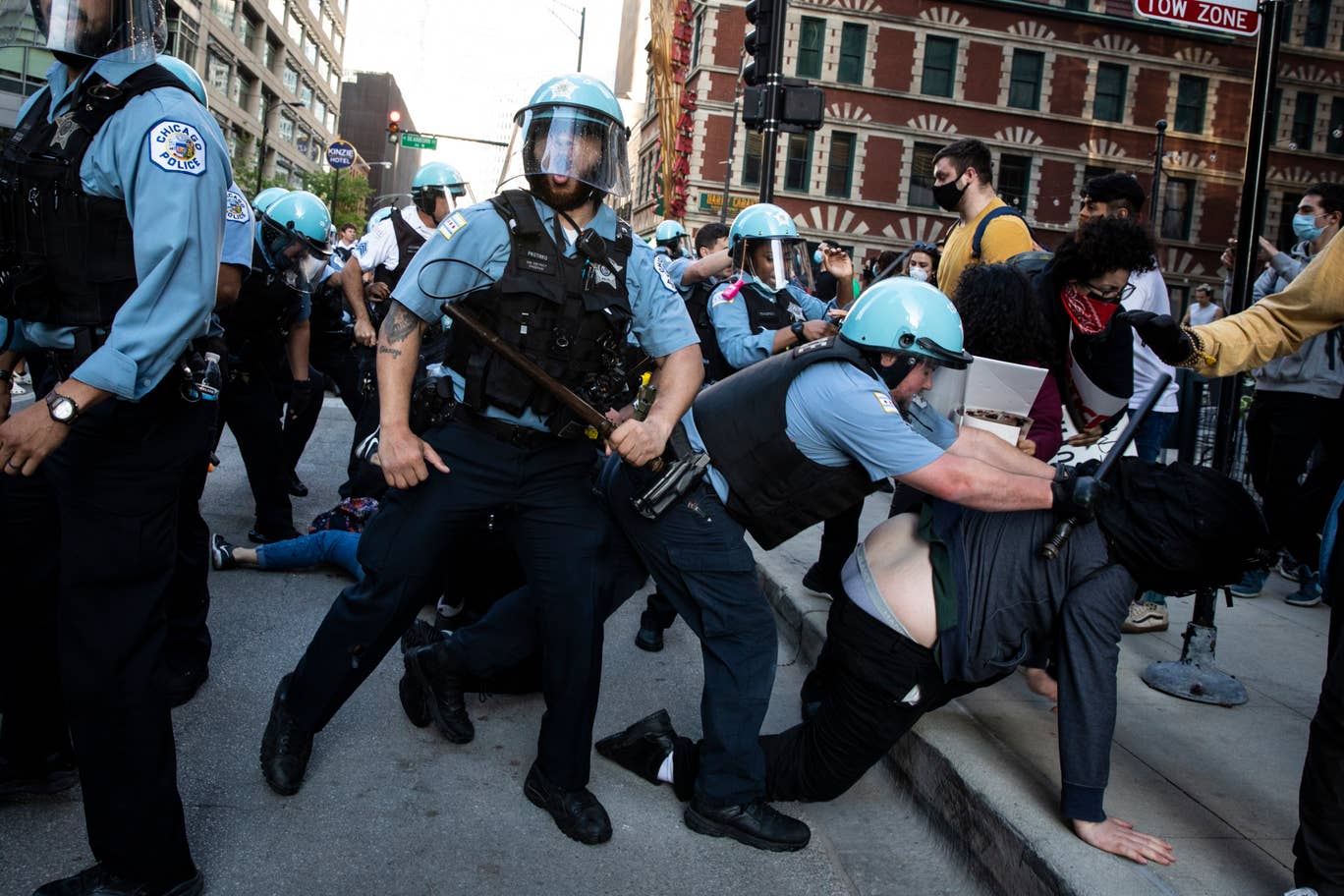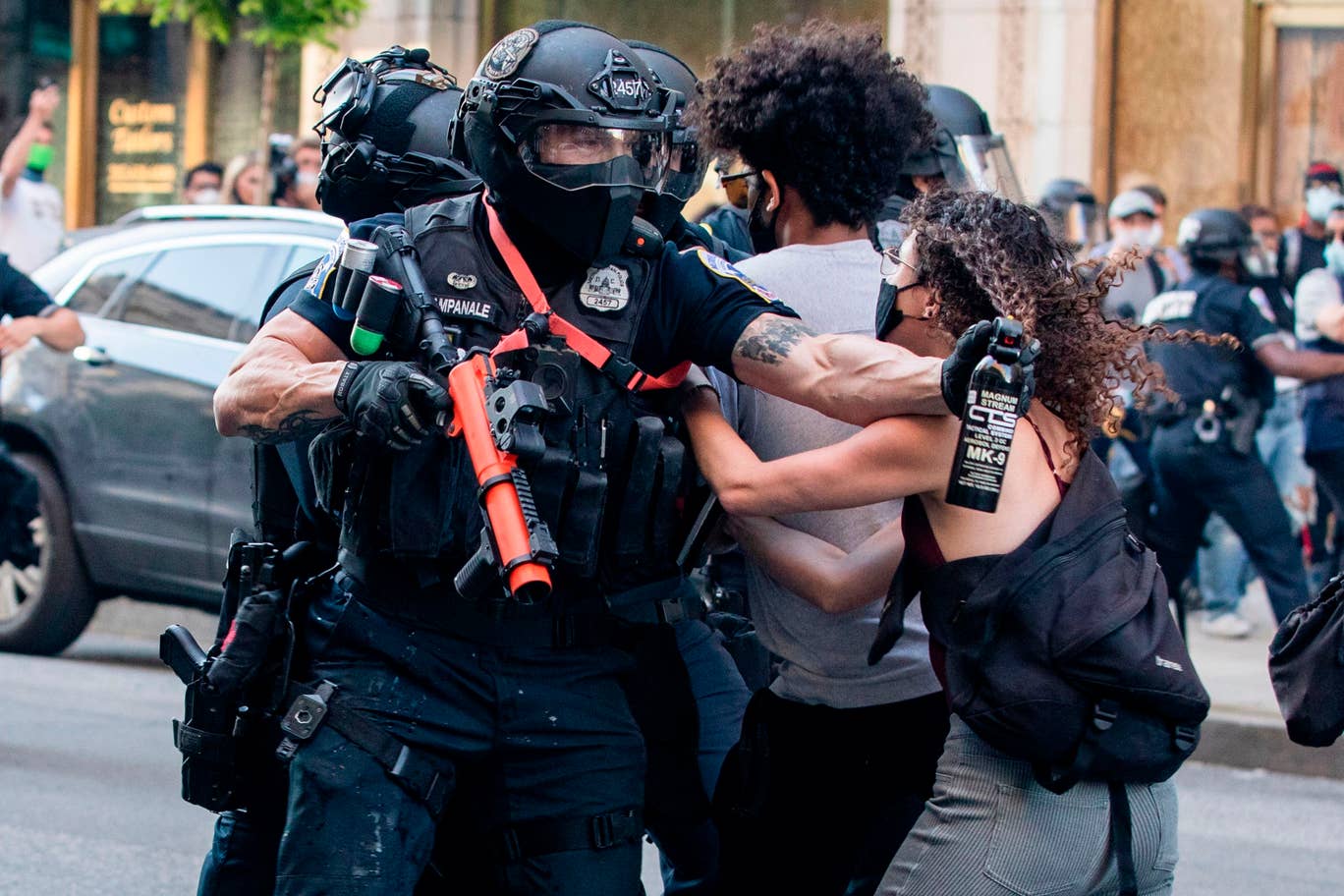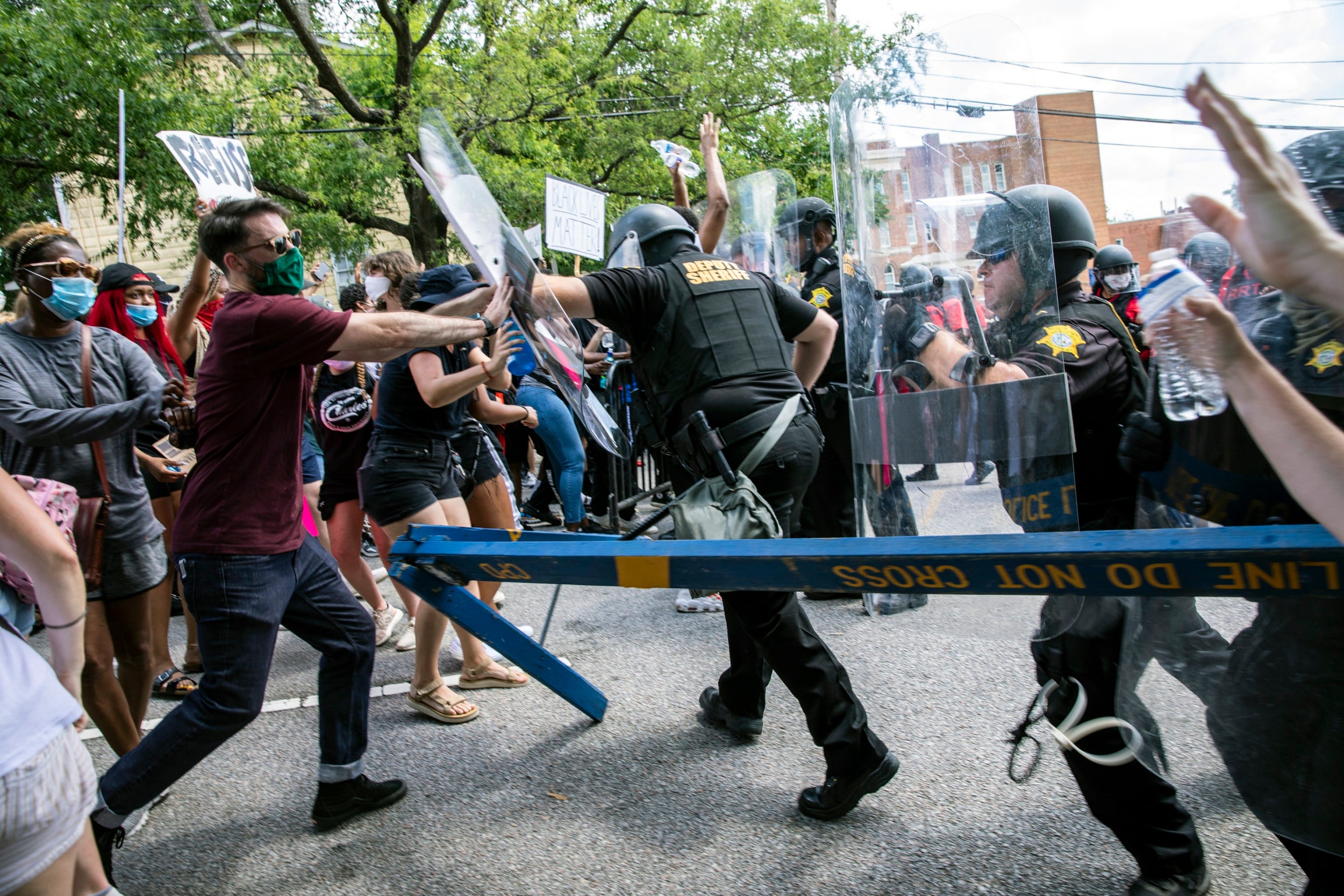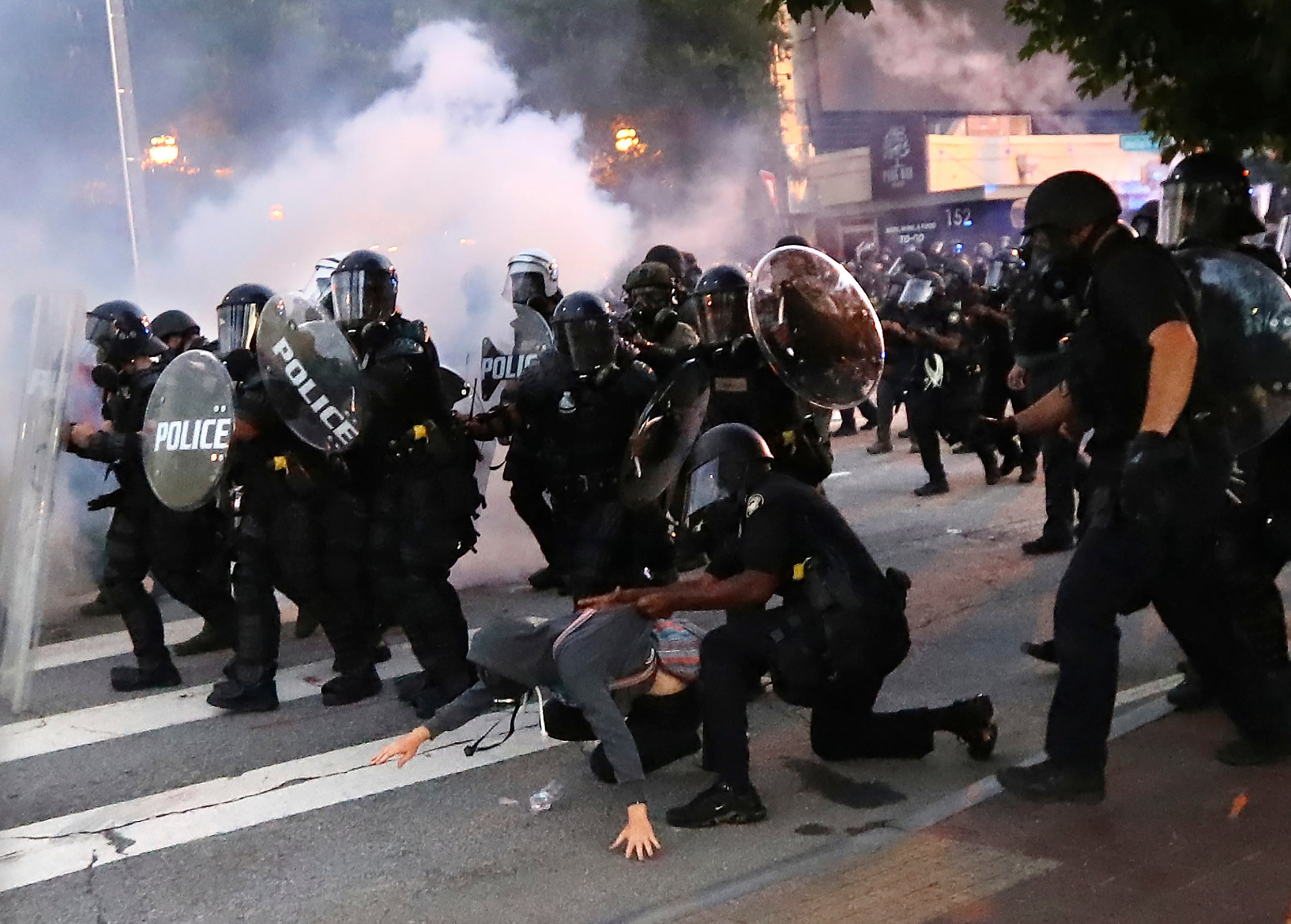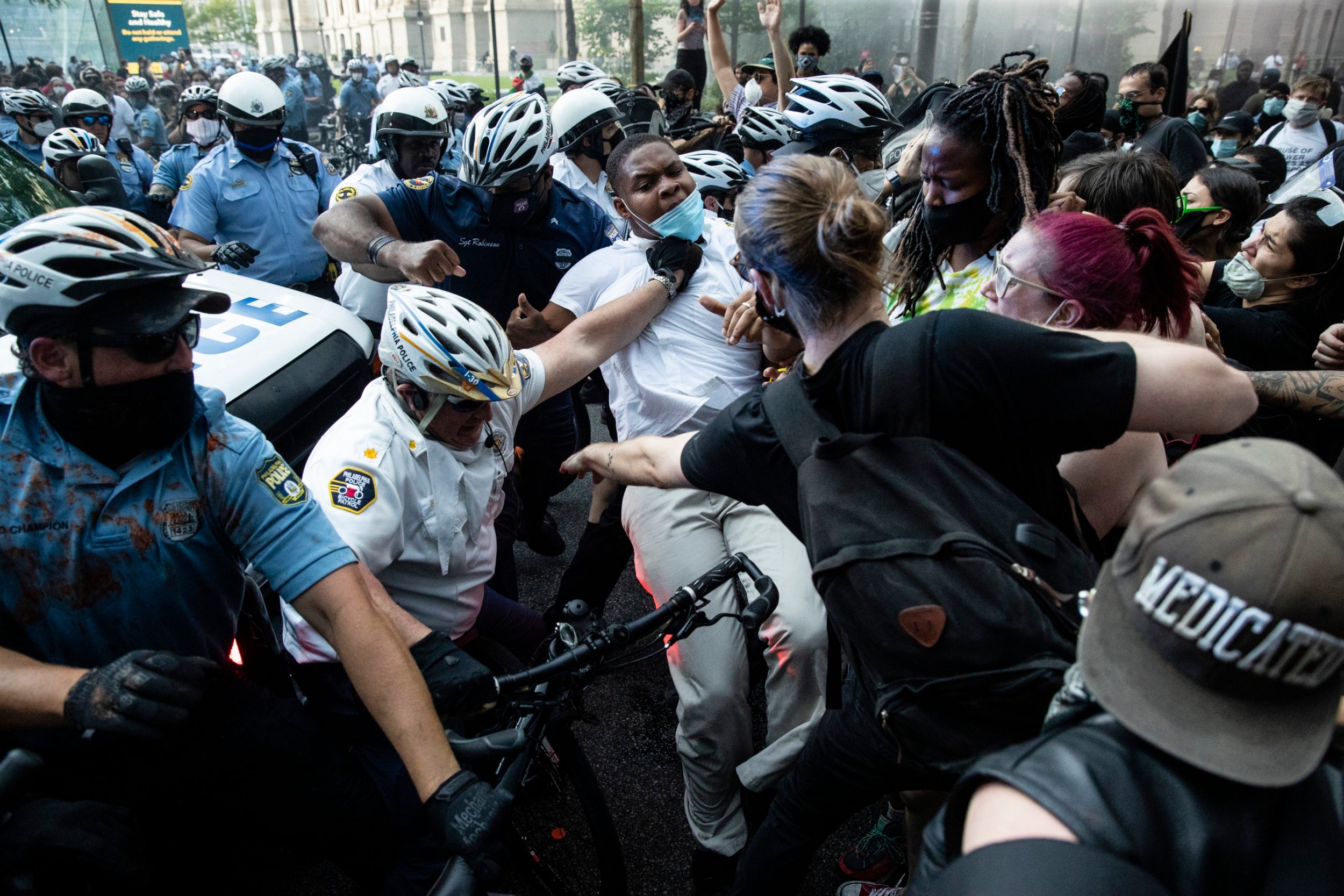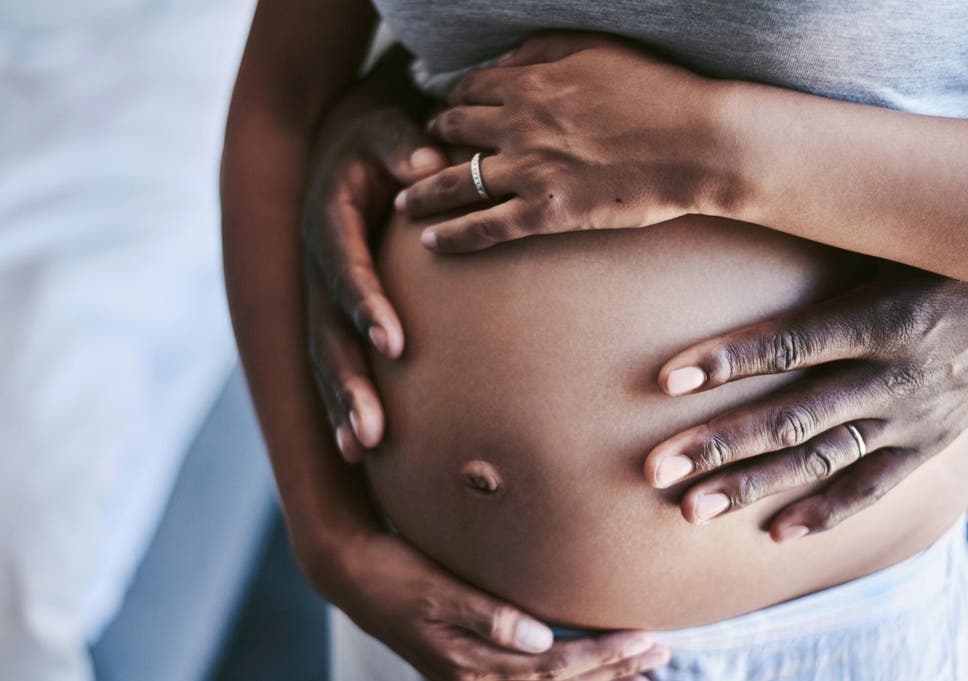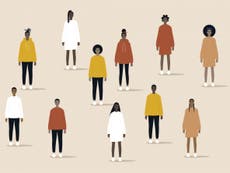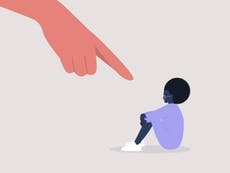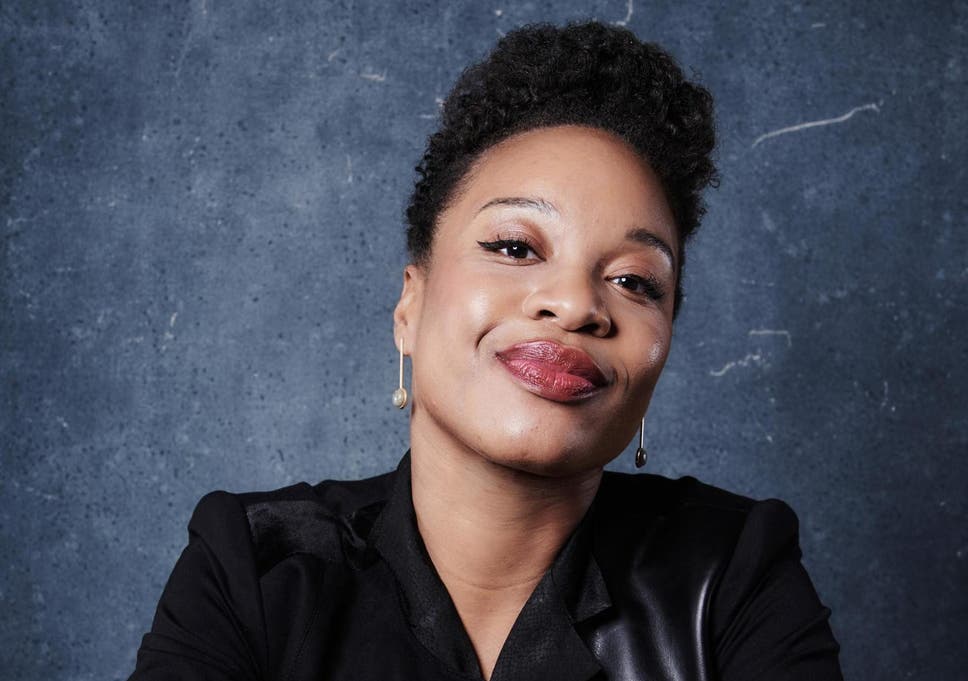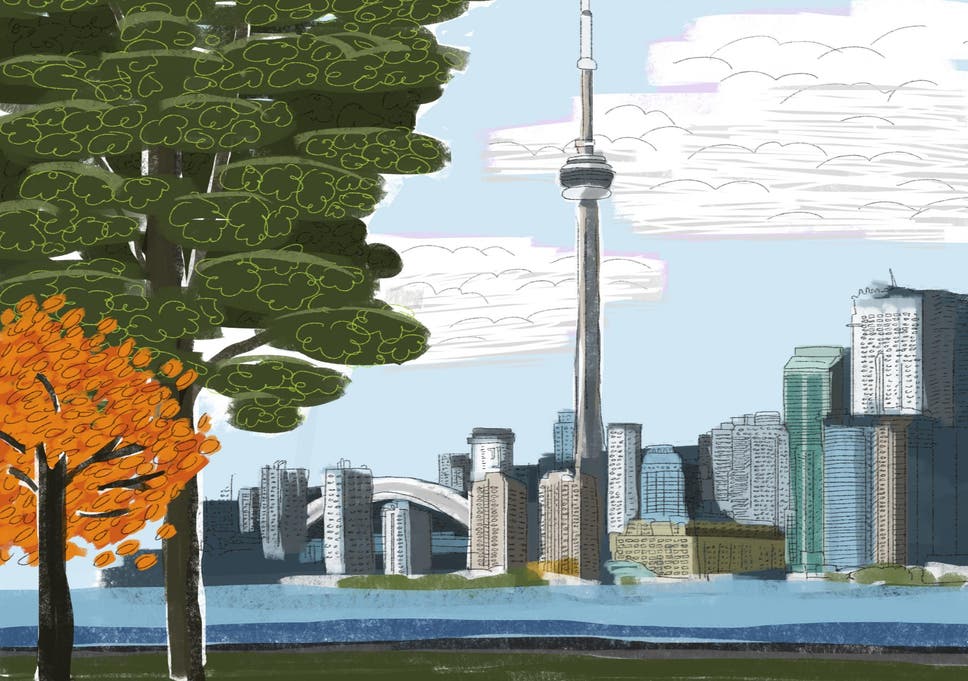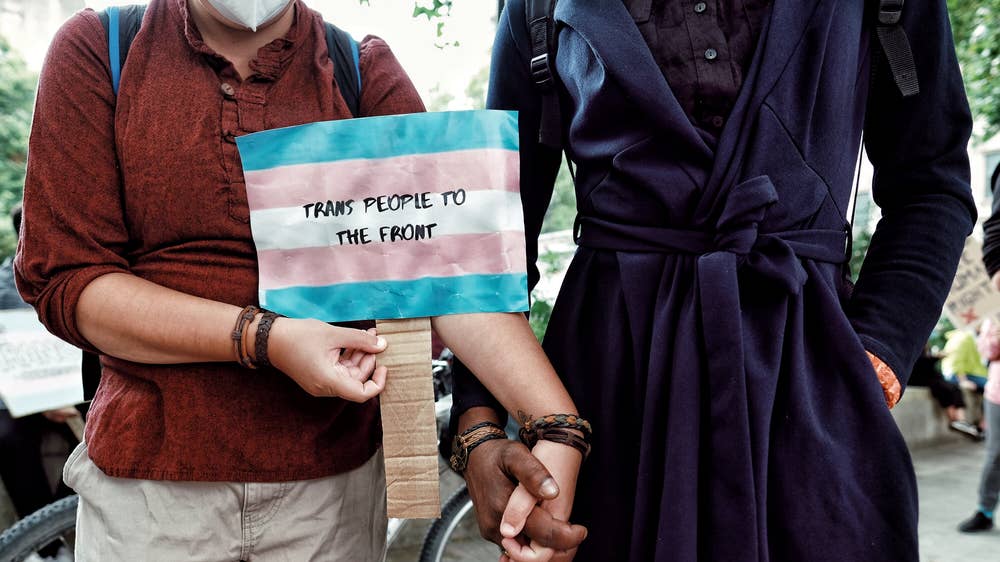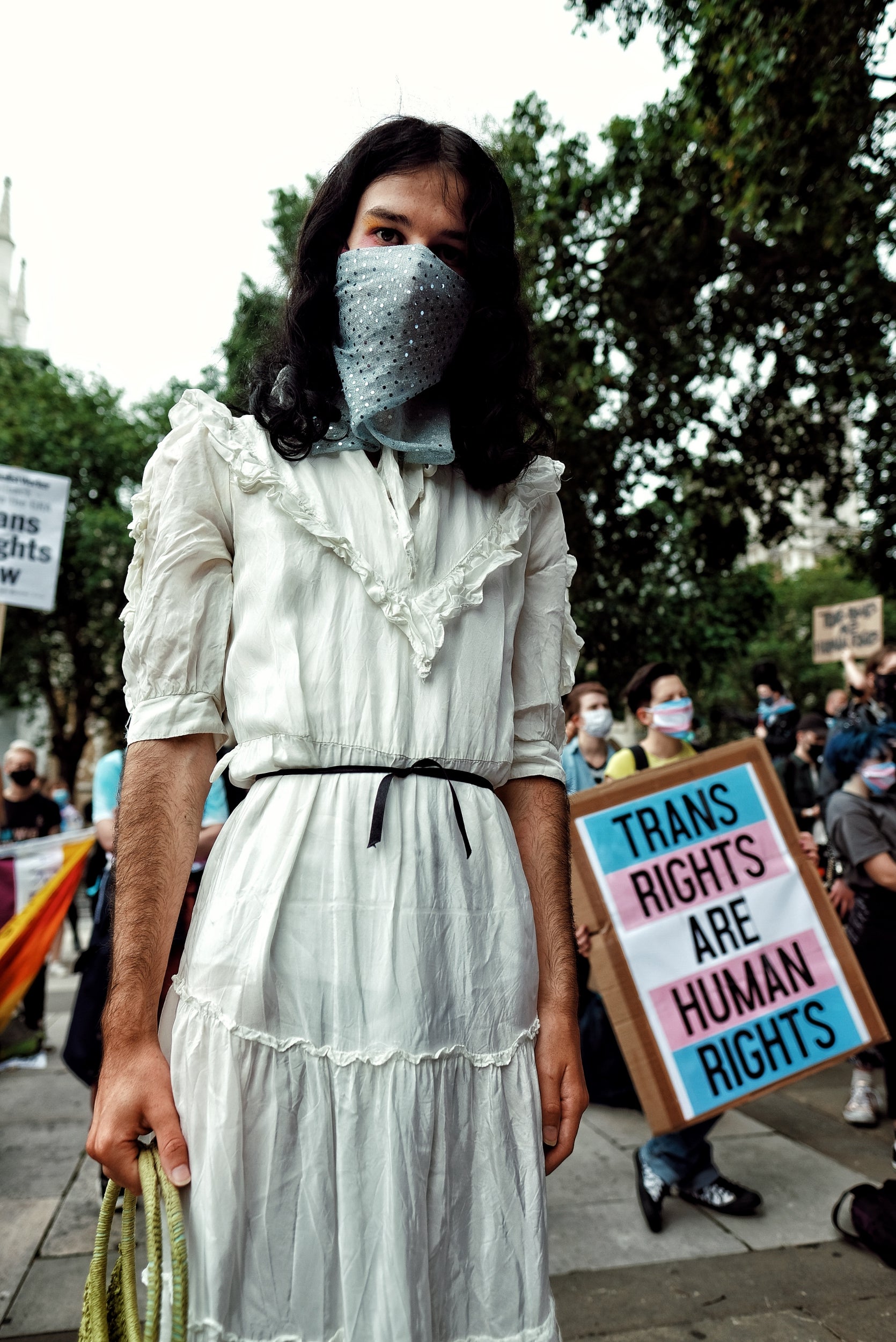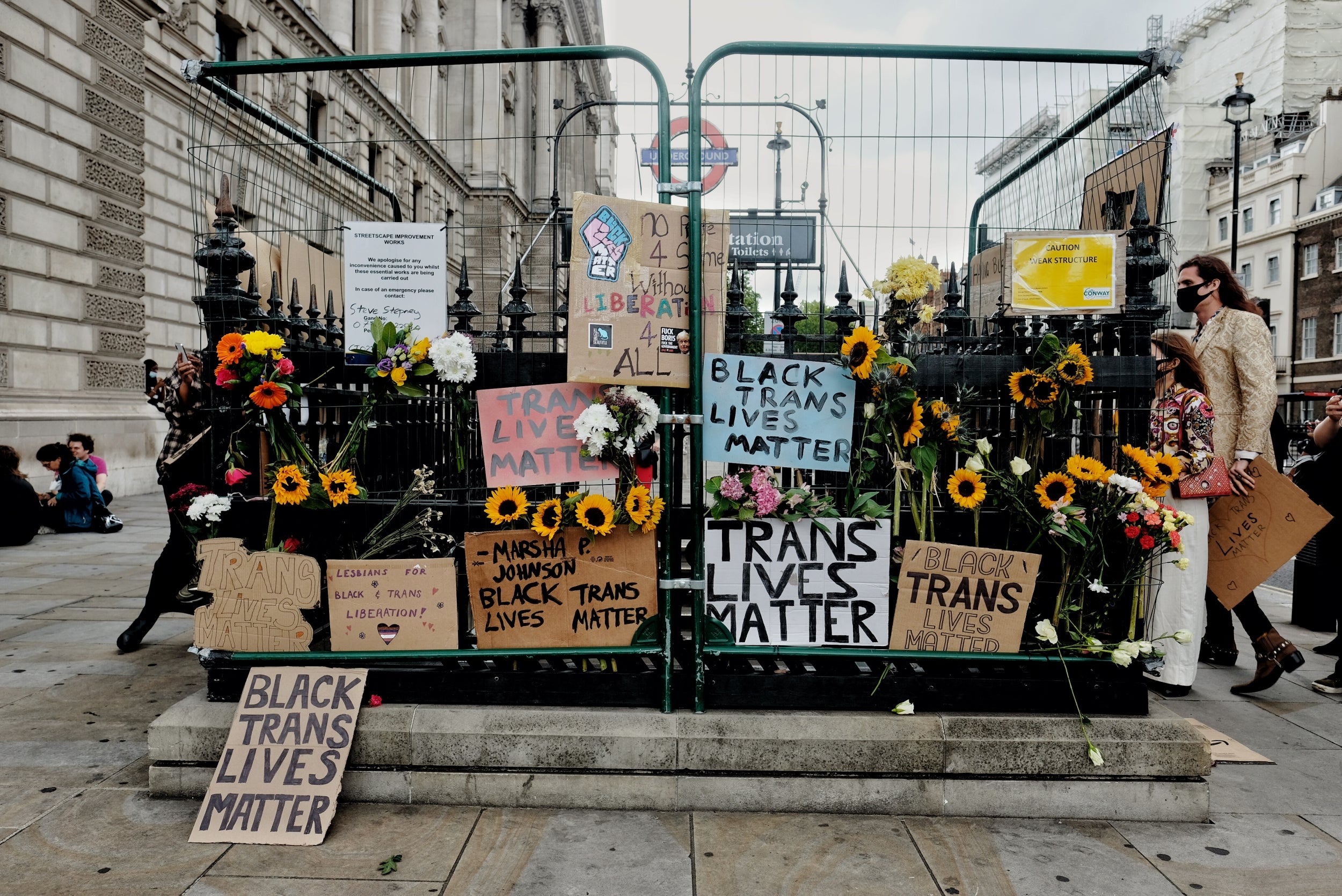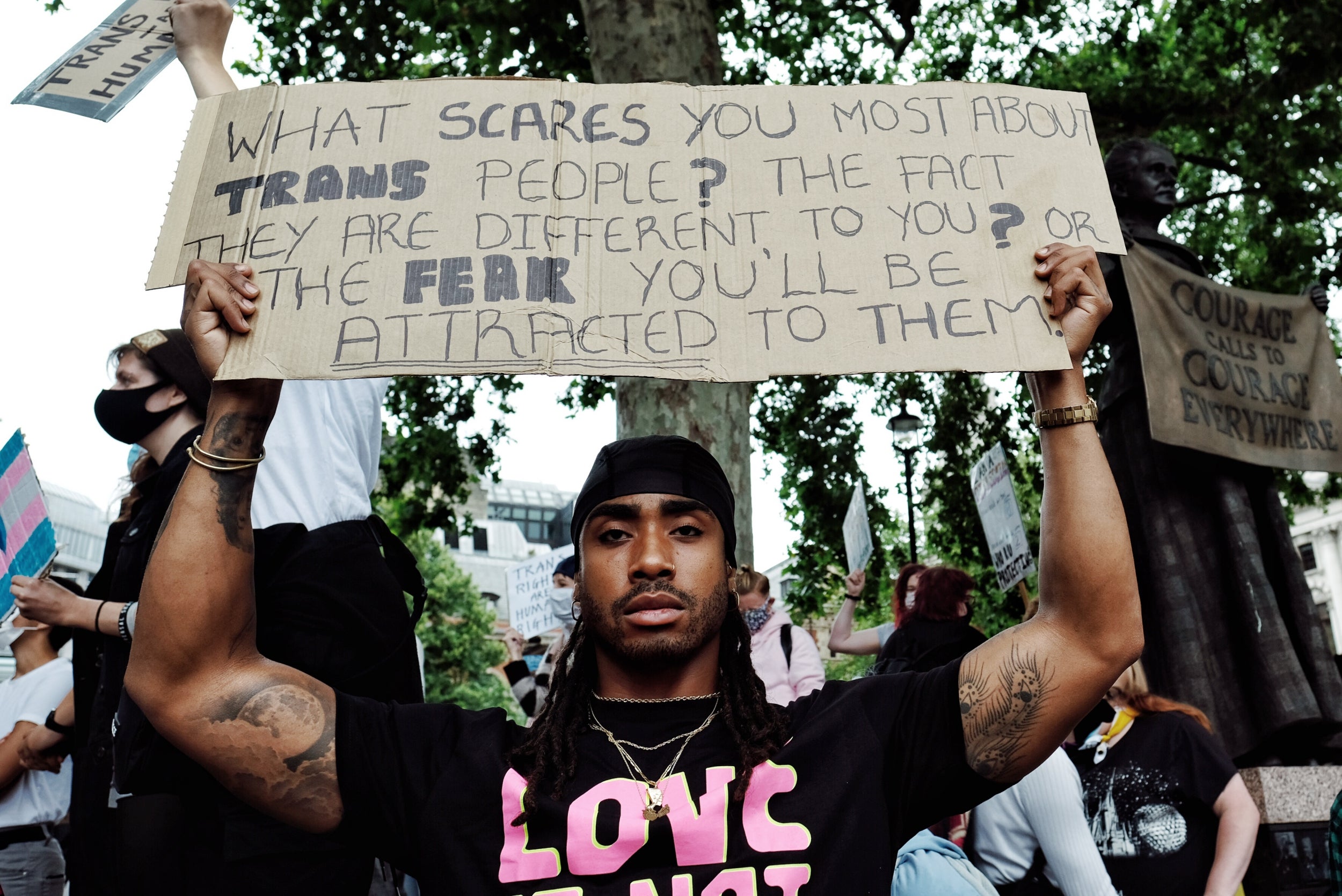From dispatching food, to ferrying medicine, these mini machines are becoming a vital service amid the pandemic, write Cade Metz and Erin Griffith
Wednesday 3 June 2020
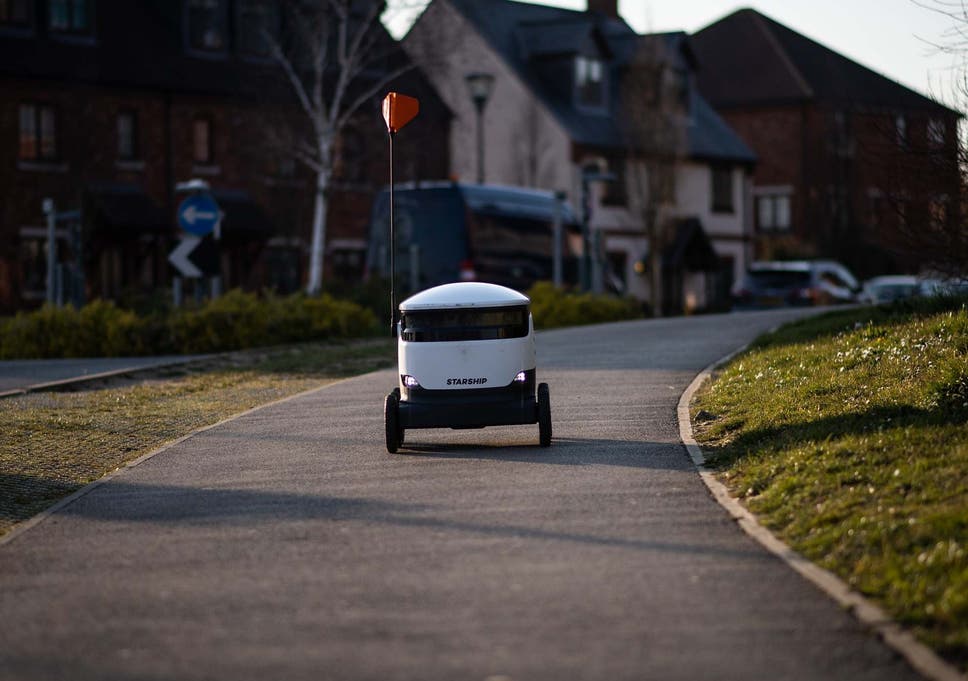
The sudden usefulness of the robots to people staying in their homes is a tantalising hint of what the machines could one day accomplish ( Getty )
If any place was prepared for quarantine, it was Milton Keynes. Two years before the pandemic, a startup called Starship Technologies deployed a fleet of rolling delivery robots in the small city about 50 miles northwest of London.
The squat six-wheeled robots shuttle groceries and dinner orders to homes and offices. As the coronavirus spread, Starship shifted the fleet even further into grocery deliveries. Locals like Emma Maslin can buy from the corner store with no human contact.
“There’s no social interaction with a robot,” Maslin says.
The sudden usefulness of the robots to people staying in their homes is a tantalising hint of what the machines can one day accomplish – at least under ideal conditions. Milton Keynes, with a population of 270,000 and a vast network of bicycle paths, is perfectly suited to rolling robots. Demand has been so high in recent weeks that some residents have spent days trying to schedule a delivery.
In recent years, companies from Silicon Valley to Somerville, Massachusetts, have poured billions of dollars into the development of everything from self-driving cars to warehouse robots. The technology is rapidly improving. Robots can help with deliveries, transportation, recycling, manufacturing.
Watch more
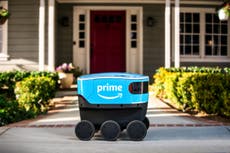
Amazon rolls out new delivery robot called Scout
But even simple tasks like robotic delivery still face technical and logistical hurdles. The robots in Milton Keynes, for example, can carry no more than two bags of groceries.
“You can’t do a big shop,” Maslin says. “They aren’t delivering from the superstores.”
A pandemic may add to demand but does not change what you can deploy, says Elliot Katz, who helps run Phantom Auto, a start-up that helps companies remotely control autonomous vehicles when they encounter situations they cannot navigate on their own.
“There is a limit to what a delivery bot can bring to a human,” Katz says. “But you have to start somewhere.”
Industry veterans know this well. Gabe Sibley, an engineer and a professor who previously worked with the National Aeronautics and Space Administration, started Zippy for sidewalk deliveries in 2017. But the San Francisco company quickly ran into challenges. The robots can move only at the pace of walking, around 1mph. That severely limits the delivery area, particularly for hot food, Sibley says.
The company never deployed any robots, selling in 2018.
“In this country, where we designed our cities around the car, the solution to sidewalk delivery is to use the roads,” Sibley says.
Founded in 2014 and backed by more than $80m (£63m), Starship Technologies is based in San Francisco. It has deployed most of its robots on college campuses around the US. Equipped with cameras, radar and other sensors, they navigate by matching their surroundings to digital maps built by the company in each location.
But even simple tasks like robotic delivery still face technical and logistical hurdles. The robots in Milton Keynes, for example, can carry no more than two bags of groceries.
“You can’t do a big shop,” Maslin says. “They aren’t delivering from the superstores.”
A pandemic may add to demand but does not change what you can deploy, says Elliot Katz, who helps run Phantom Auto, a start-up that helps companies remotely control autonomous vehicles when they encounter situations they cannot navigate on their own.
“There is a limit to what a delivery bot can bring to a human,” Katz says. “But you have to start somewhere.”
Industry veterans know this well. Gabe Sibley, an engineer and a professor who previously worked with the National Aeronautics and Space Administration, started Zippy for sidewalk deliveries in 2017. But the San Francisco company quickly ran into challenges. The robots can move only at the pace of walking, around 1mph. That severely limits the delivery area, particularly for hot food, Sibley says.
The company never deployed any robots, selling in 2018.
“In this country, where we designed our cities around the car, the solution to sidewalk delivery is to use the roads,” Sibley says.
Founded in 2014 and backed by more than $80m (£63m), Starship Technologies is based in San Francisco. It has deployed most of its robots on college campuses around the US. Equipped with cameras, radar and other sensors, they navigate by matching their surroundings to digital maps built by the company in each location.
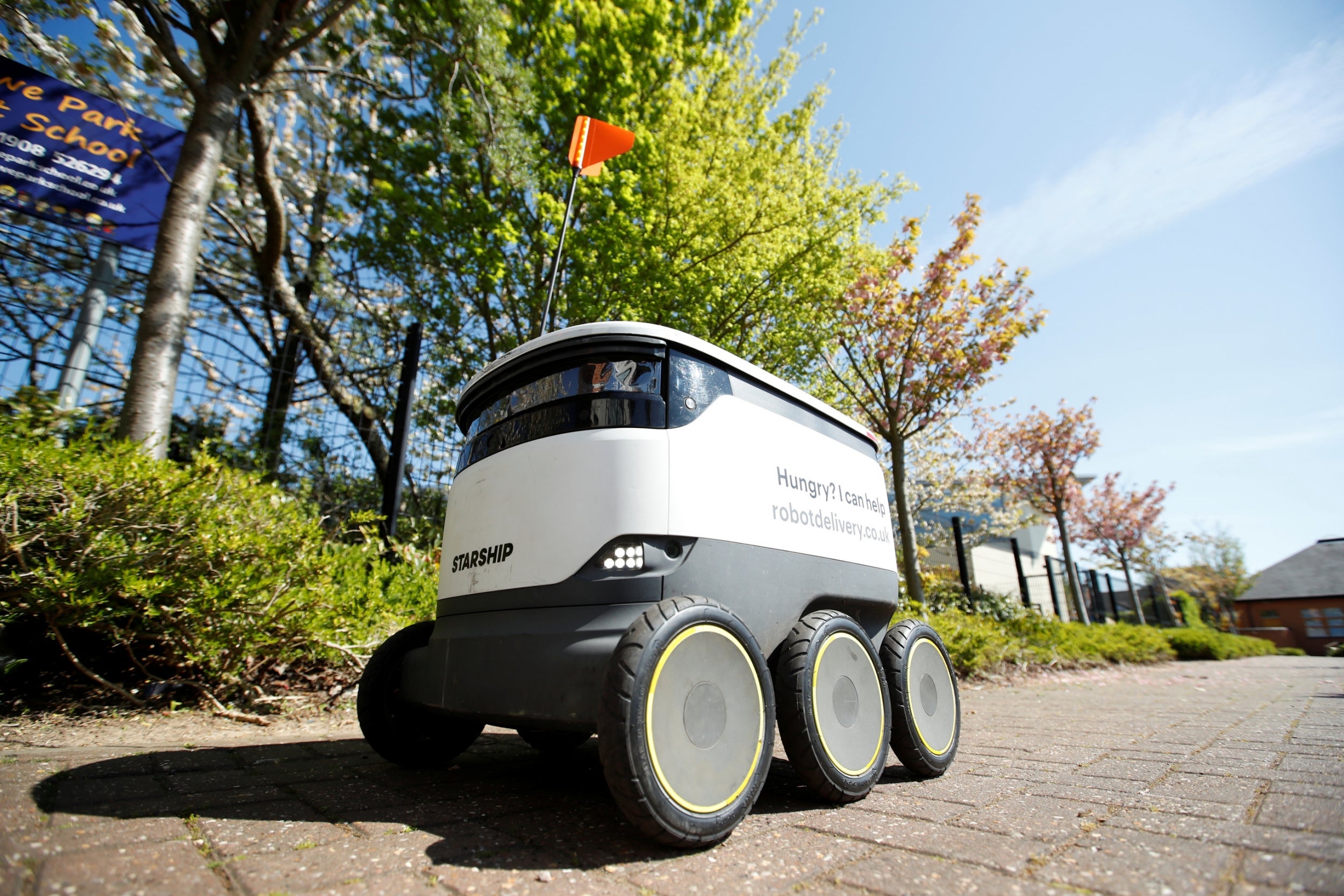
Currently, machines are not able to hold much (Reuters)
The company chose Milton Keynes for a wider deployment in part because the robots can navigate it with relative ease. Built after the Second World War, the city was carefully planned, with most streets laid out in a grid and bicycle and pedestrian paths, called “redways”, running beside them.
When the Starship robots first arrived in Milton Keynes, Liss Page thought they were cute but pointless. “The first time I met one, it was stuck on the curb outside my house,” she says.
Then, in early April, she opened a letter from the NHS advising her not to leave the house because her asthma and other conditions made her particularly vulnerable to the coronavirus. In the weeks that followed, the robots provided a much-needed connection to the outside world.
It just seemed like a vanity project before. The pandemic has given them a platform to launch a real business
Smaller deliveries suit Page because she lives alone. A vegan, she can order nut milk and margarine straight to her door. But like the grocery vans that deliver larger orders across the city, the Starship robots are ultimately limited by what is on the shelves.
“You pad out the order with things you don’t really need to make the delivery charge worthwhile,” Page says. “With the last delivery, all I got were the things I didn’t really need.”
Residents like Page set deliveries through a smartphone app. They typically pay £1 for each delivery, but in Milton Keynes, Starship has raised the price to as much as £2 during the busiest times in an effort to spread demand across the day.
The robots deliver groceries to doctors, nurses and other employees of the NHS for free. They even join the Thursday night tribute to the NHS, blinking their headlights as residents clap and cheer from their doorsteps. The fleet of 80 robots will soon expand to 100.
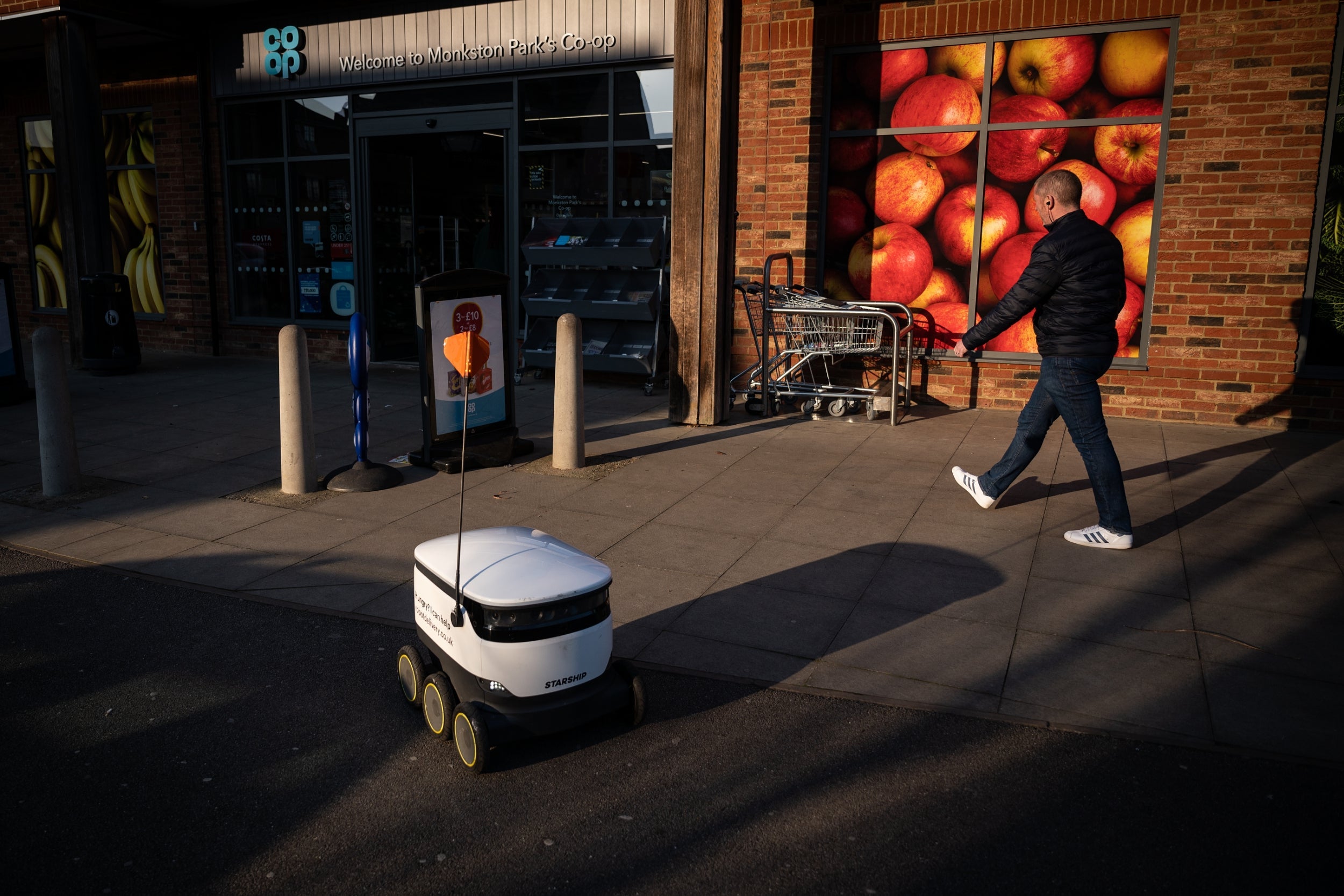
There is the potential for the robots to become a viable business (Getty)
Though this may be the most extensive deployment of delivery robots in the world, others have popped up in recent years. In Christiansburg, Virginia, Paul and Susie Sensmeier can arrange drugstore and bakery deliveries via flying drone. Wing, a subsidiary of Google’s parent company, Alphabet, has been offering drone deliveries in the area since the fall.
They can order penne pasta, marinara sauce and toilet paper. But they can’t order prescription medicines via Wing – the drones are stocked at a Wing warehouse, not at a drugstore – and like the robots in Milton Keynes, the drones can carry only so much.
“I can only get two muffins or two croissants,” Susie Sensmeier, 81, says.
Companies like Wing and Starship hope they can expand these services and refine their skills. Now there is new impetus.
“Overnight, delivery has gone from a convenience to a vital service,” says Starship’s chief executive, Lex Bayer. “Our fleets are driving nonstop, 14 hours a day.”
In Milton Keynes, Starship has gradually expanded the reach of its service, doubling its fleet and teaming up with several new grocery stores. It recently started at a service in Chevy Chase, Maryland, not far from Washington.
Page, a business analyst who has lived in Milton Keynes for more than 25 years, believes the service can become a viable business.
“It just seemed like a vanity project before,” she says. “The pandemic has given them a platform to launch a real business.”
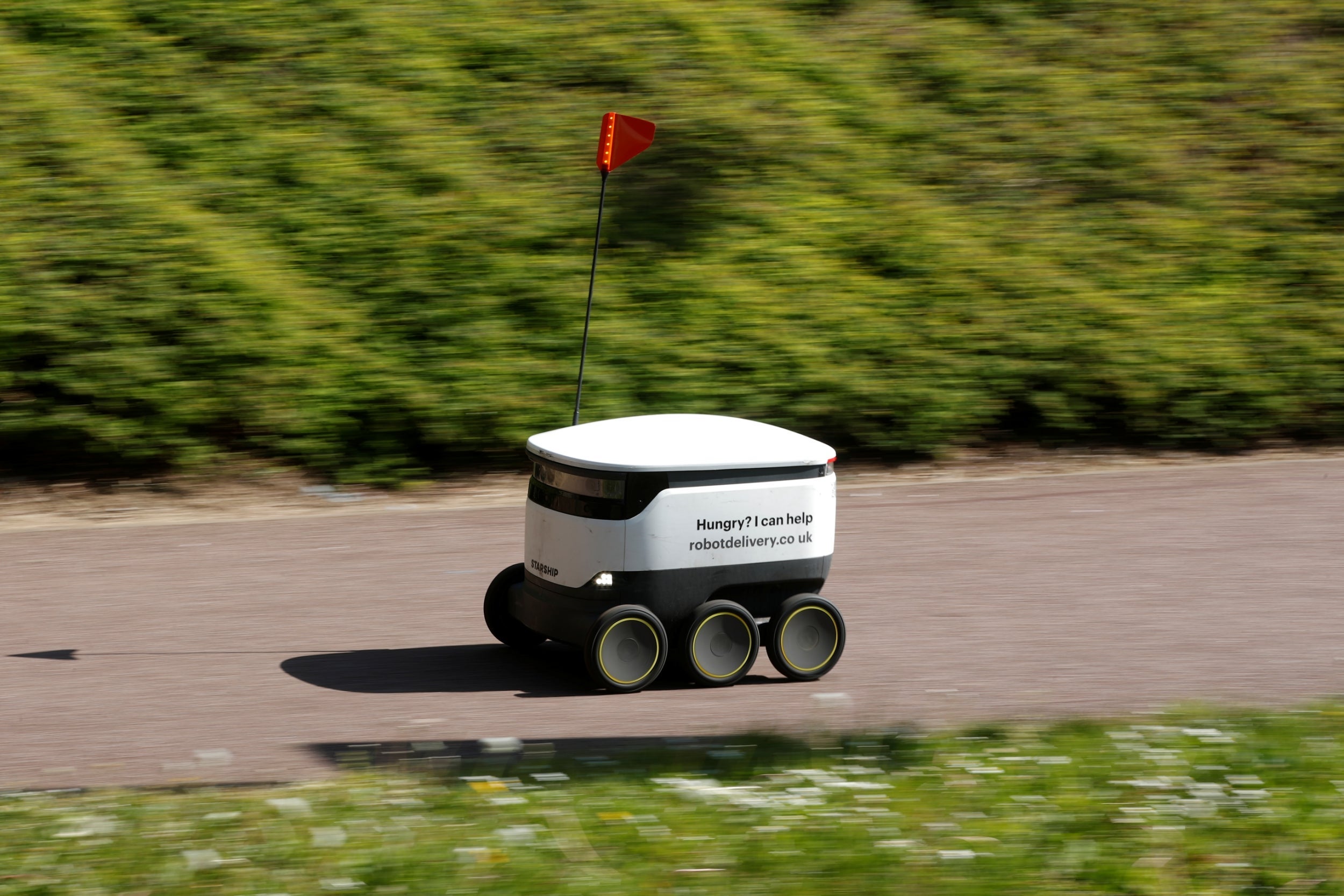
Companies have poured billions into the sector (Reuters)
But as much as the pandemic has lifted startups like Starship, it has also hurt them. Many of the college campuses where Starship deployed its robots have shut down. Though the company has worked to shift those robots to nearby locations, it has been forced to lay off employees and contractors. Janel Steinberg, a company spokesperson, says the cuts were “primarily about rebalancing our workforce to adapt to the demand in different locations”.
Read more
Delivery robot bursts in flames after ‘human error’
Domino’s set to introduce pizza delivery robots in New Zealand
Nuro, a startup in Silicon Valley, has long promised larger robots that can drive on public roads. But it has not yet deployed these robots, and like most self-driving car companies, Nuro has been forced to curtail its testing. Rather than making deliveries, its robots are shuttling supplies across an old basketball stadium in Sacramento that has been converted into a temporary hospital.
Sidewalk robots and flying drones also require human help. Starship and similar companies must monitor the progress of each robot from afar, and if anything goes wrong, remote operators take over. With social distancing, that has become more difficult. Remote operators who once worked in call centres have moved into their homes.
Katz’s company, Phantom Auto, is now helping companies make the transition. “This is a very, very difficult problem to solve,” Katz says. “We are in the autonomy-doesn’t-quite-work-yet business.”
© The New York Times
Nuro, a startup in Silicon Valley, has long promised larger robots that can drive on public roads. But it has not yet deployed these robots, and like most self-driving car companies, Nuro has been forced to curtail its testing. Rather than making deliveries, its robots are shuttling supplies across an old basketball stadium in Sacramento that has been converted into a temporary hospital.
Sidewalk robots and flying drones also require human help. Starship and similar companies must monitor the progress of each robot from afar, and if anything goes wrong, remote operators take over. With social distancing, that has become more difficult. Remote operators who once worked in call centres have moved into their homes.
Katz’s company, Phantom Auto, is now helping companies make the transition. “This is a very, very difficult problem to solve,” Katz says. “We are in the autonomy-doesn’t-quite-work-yet business.”
© The New York Times
AMAZON ROLLS OUT NEW DELIVERY ROBOT CALLED SCOUT
An Amazon employee will accompany the autonomous machines at first to ensure they can safely navigate around pedestrians and pets
Anthony Cuthbertson
Thursday 24 January 2019
Amazon has launched a new robot delivery service in the US using a six wheeled machine that is "the size of a small cooler".
The Amazon Scout uses self-driving technology to navigate through neighbourhoods to deliver packages to Amazon Prime customers, though its initial roll out is limited.
The first deliveries are taking place in Snohomish County, just to the north of Amazon's headquarters in Seattle, Washington.
Deliveries will be limited to daylight hours between Monday and Friday amd only six of the Scout delivery robots will be deployed at first.
Each will also be accompanied by an Amazon employee to ensure they can safely navigate around any pedestrians or pets it might come across.
Inside the Amazon Fulfilment Centres
Show all 15
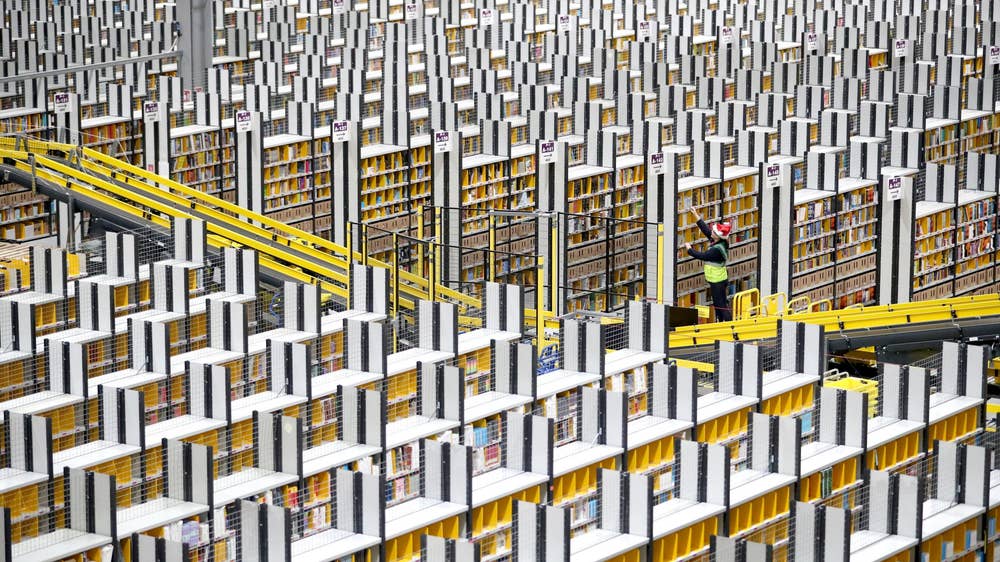
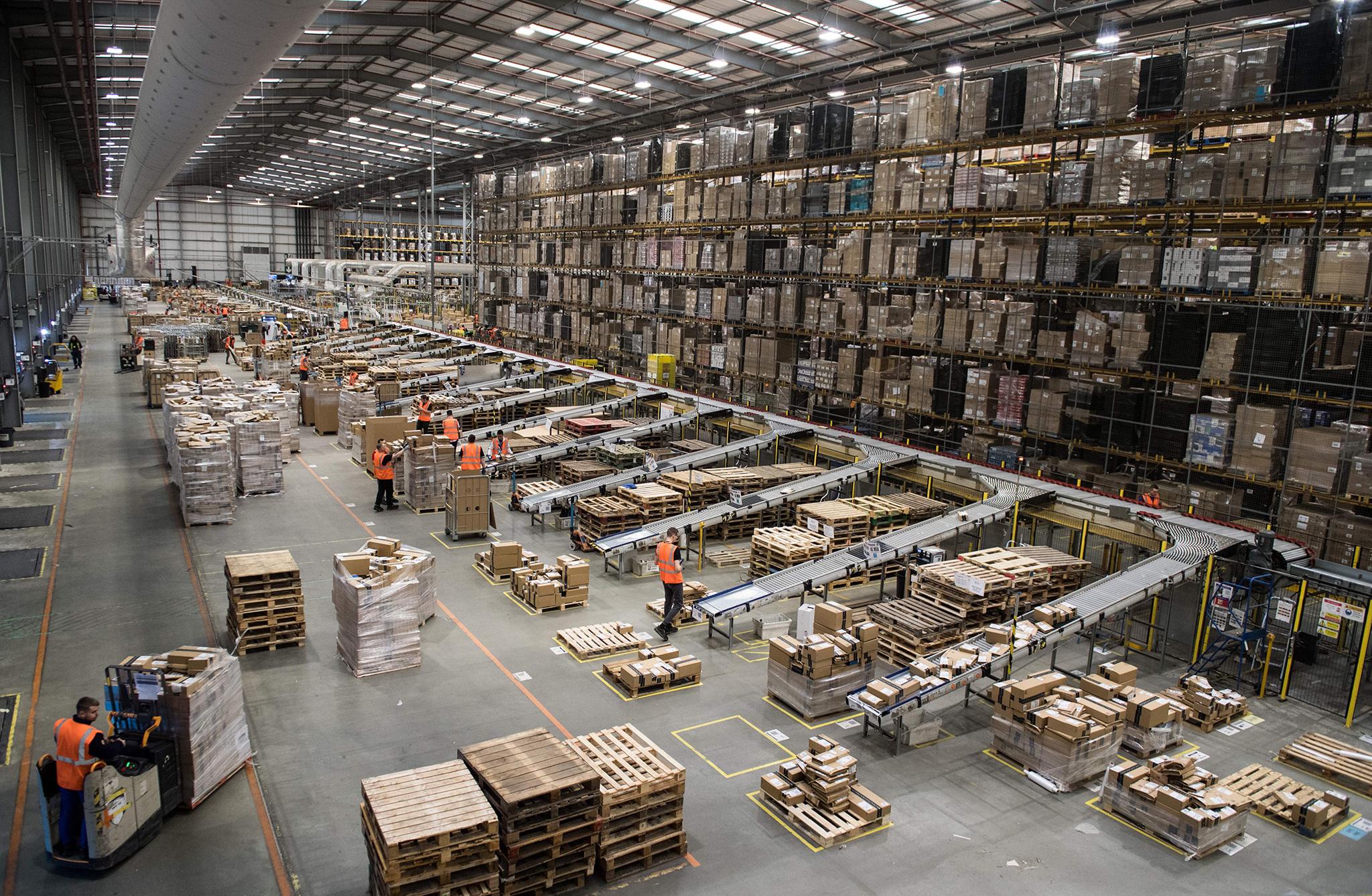
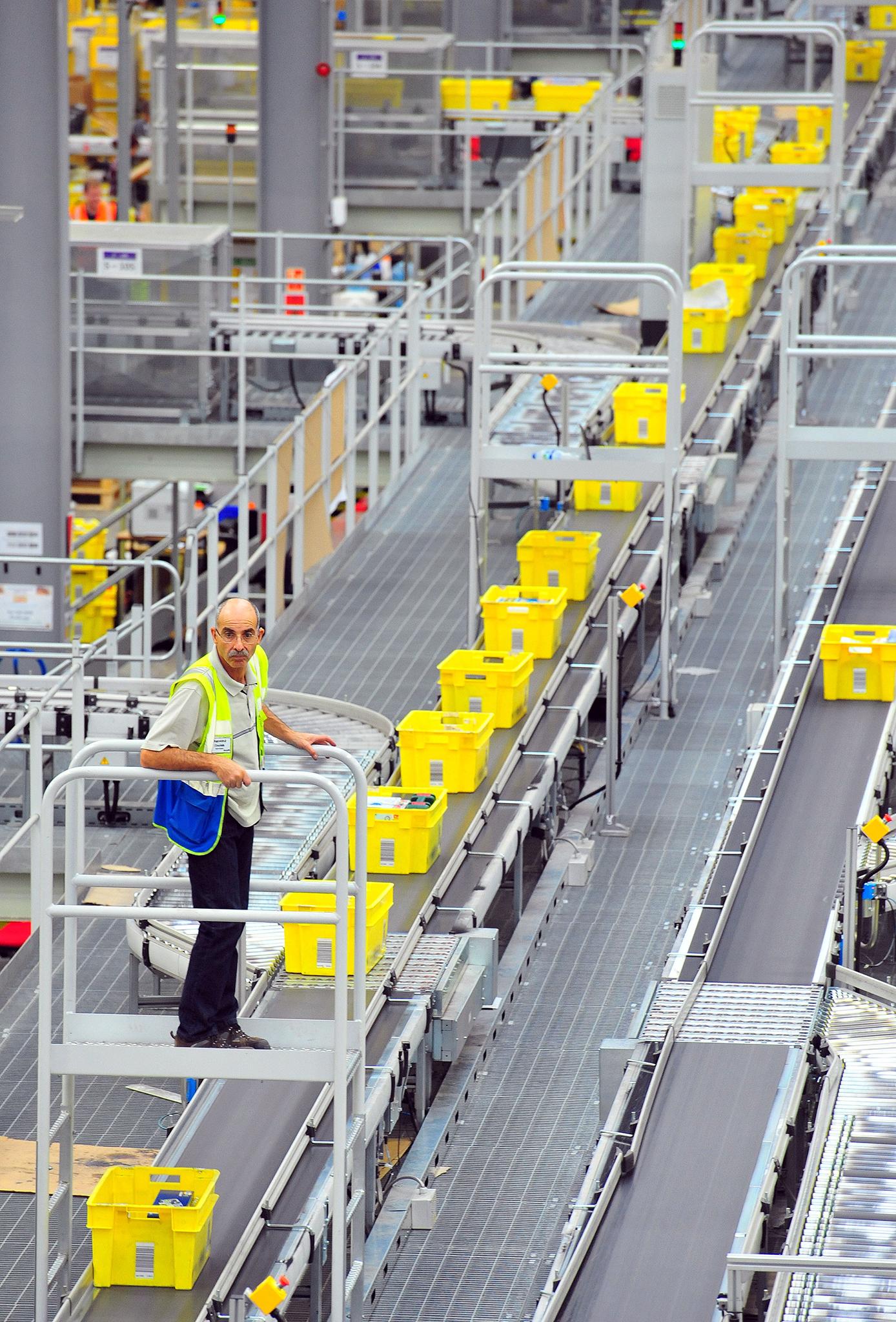

YOU CAN CALL THEM WHAT YOU WANT BUT THEY ARE
STILL WAREHOUSES.
Sean Scott, vice president of Amazon Scout, said the Scout robot will be part of a growing number of delivery solutions for the online retail giant.
"We are happy to welcome Amazon Scout to our growing suite of innovative delivery solutions for customers and look forward to taking the learnings from this first neighborhood so Amazon Scout can, over time, provide even more sustainability and convenience to customer deliveries," Mr Scott said.
Snohomish County executive Dave Somers added: “We are delighted to welcome Amazon Scout into our community. Similar to Amazon, we are always looking for new ways to better deliver service to our residents.”
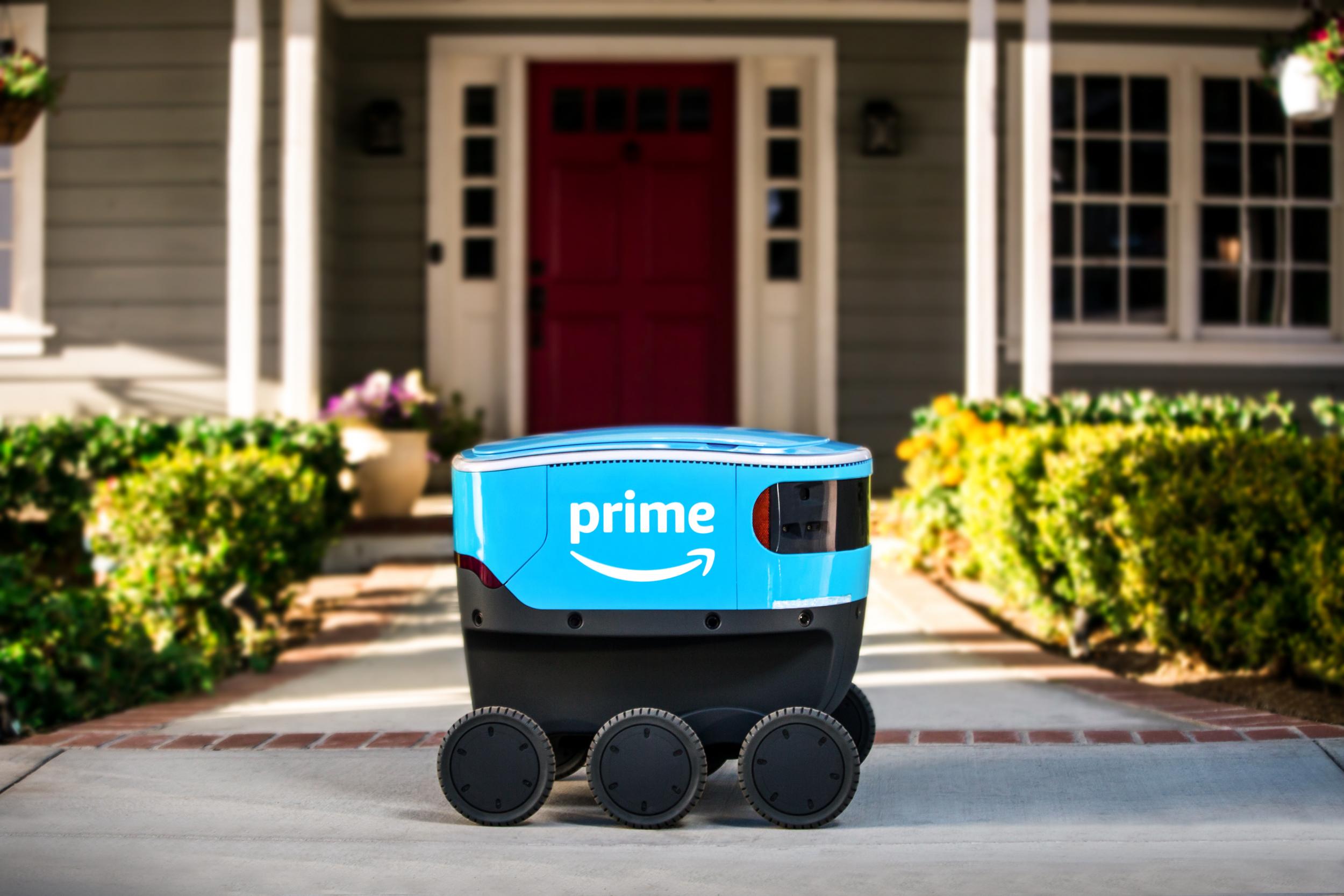
The Scout robot is being tested near Amazon's Seattle headquarters (Amazon)
Other delivery methods Amazon is currently working on include autonomous drones, which are already being tested in the UK.
It is hoped such technologies will dramatically reduce delivery times, with the first Prime Air delivery in 2016 dropping off a package within 13 minutes of being ordered.
"It looks like science fiction, but it's real," Amazon said at the time. "One day, seeing Prime Air vehicles will be as normal as seeing mail trucks on the road."
Amazon is yet to reveal if and when the Scout robot or Prime Air will be introduced to customers on a wider scale.
"We are happy to welcome Amazon Scout to our growing suite of innovative delivery solutions for customers and look forward to taking the learnings from this first neighborhood so Amazon Scout can, over time, provide even more sustainability and convenience to customer deliveries," Mr Scott said.
Snohomish County executive Dave Somers added: “We are delighted to welcome Amazon Scout into our community. Similar to Amazon, we are always looking for new ways to better deliver service to our residents.”

The Scout robot is being tested near Amazon's Seattle headquarters (Amazon)
Other delivery methods Amazon is currently working on include autonomous drones, which are already being tested in the UK.
It is hoped such technologies will dramatically reduce delivery times, with the first Prime Air delivery in 2016 dropping off a package within 13 minutes of being ordered.
"It looks like science fiction, but it's real," Amazon said at the time. "One day, seeing Prime Air vehicles will be as normal as seeing mail trucks on the road."
Amazon is yet to reveal if and when the Scout robot or Prime Air will be introduced to customers on a wider scale.
